Art World
Far Out! These 5 Cosmic Art Projects Prove That Outer Space Is the Next Avant-Garde Frontier
Art in space has a long history. Here are some major examples.
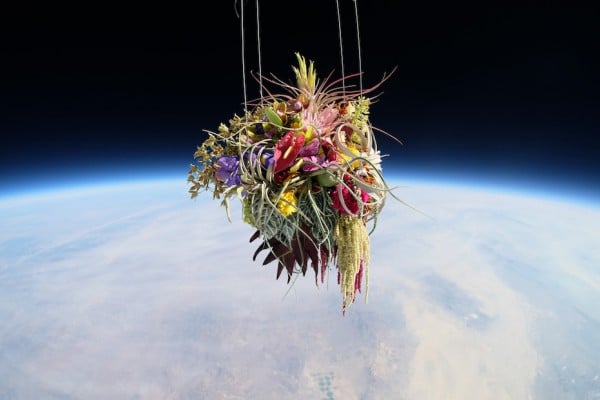
Art in space has a long history. Here are some major examples.

Andrew Nunes

As barriers to commercial space travel slowly erode each year, artists are taking note.
From Trevor Paglen (whose dealer, Metro Pictures, is presenting at Frieze Los Angeles this week) to Tavares Strachan, those in search of a new frontier have found the cosmos to be “a seemingly black projection screen for [the] imagination,” says Marie Laurberg, the curator of “The Moon: From Inner Worlds to Outer Space,” a space-centric art exhibition that closed in January at the Louisiana Museum of Modern Art in Denmark.
Space art has a long history. As far back as 1969, six artists including Andy Warhol, Robert Rauschenberg, John Chamberlain, and Claes Oldenburg worked on the Moon Museum, a tiny ceramic wafer to which each artist added a small drawing. The work was allegedly smuggled onto the Apollo 12 spacecraft and left on the moon by astronauts.
The latest wave of space art varies in approach and subject matter. Here, we take a look at five visionary projects.
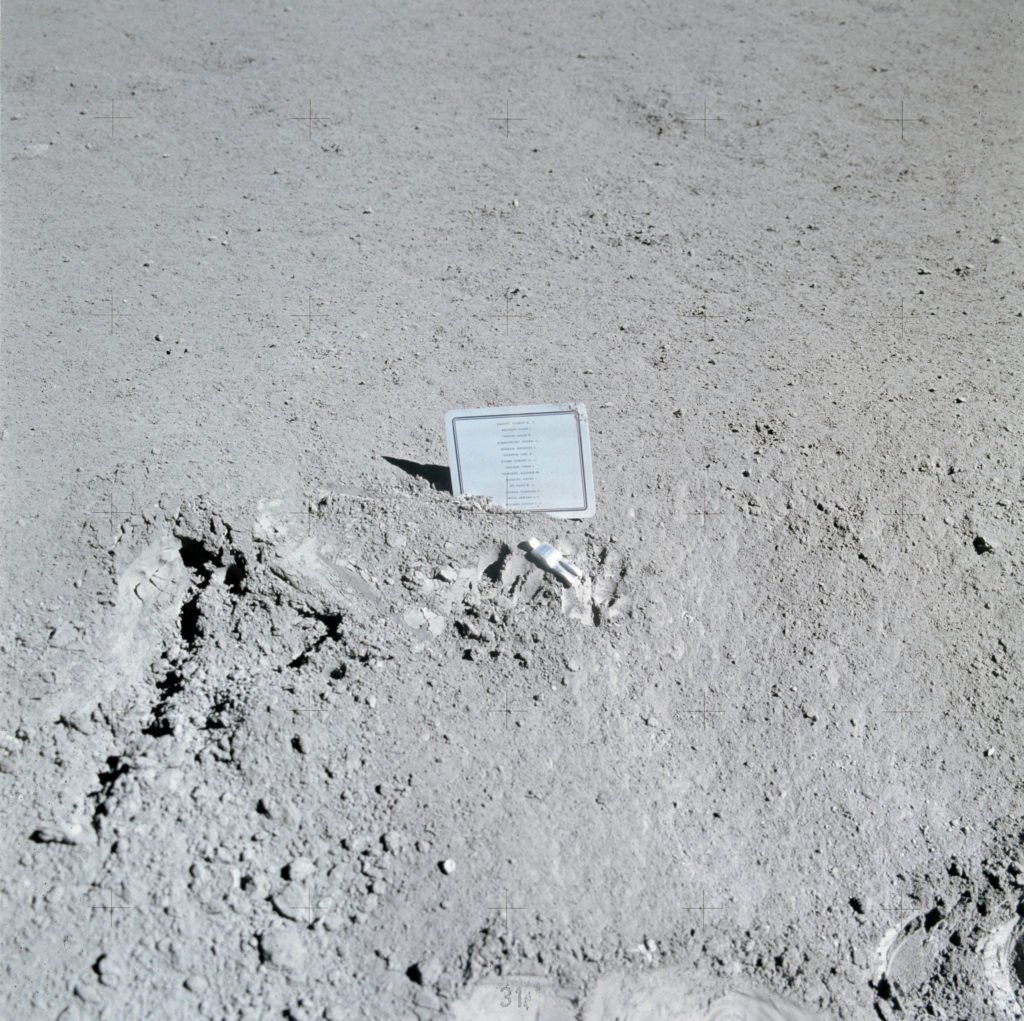
Paul Van Hoeydonck, Fallen Astronaut (1971). Courtesy of the artist.
Without confirmation that the Moon Museum is, in fact, on the moon, the first artwork in space may actually be Fallen Astronaut, a small aluminum sculpture of a collapsed astronaut in a spacesuit made in 1971 by Belgian artist Paul van Hoeydonck.
The result of an agreement between the artist and American astronaut David Scott, the three-inch tall sculpture was transported to the surface of the moon by the crew of the Apollo 15 space mission in 1971. Installed next to a plaque listing the names of the fourteen American and Soviet astronauts who had died during the age of space exploration, the sculpture serves as a monument to early cosmic pioneers.
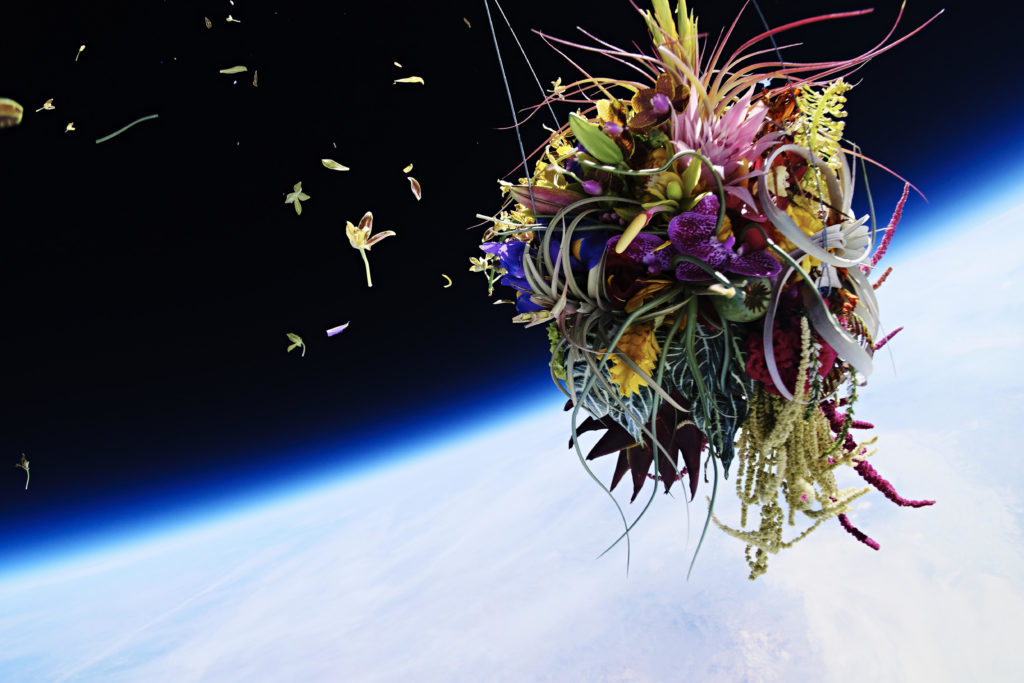
Azuma Makoto. EXOBIOTANICA—Botanical Space Flight (2014). © Azuma Makoto / AMKK.
More than four decades after van Hoeydonck’s project, Japanese artist Makoto Azuma took his floral art practice into outer space in 2014, when he launched a 50-year-old white pine bonsai tree and an bouquet of flowers nearly 100,000 feet into the stratosphere. Dubbed EXOBIOTANICA, the botanical specimens were propelled into space from Black Rock Desert in Nevada through a specially designed balloon and frame made by JP Aerospace, a DIY space operation.
Though the project’s time in space lasted just over two hours (100 minutes to reach its peak height and 40 minutes of earthbound descent), six mounted cameras captured stunning stills of the many phases of the project’s trajectory, falling in line with the artist’s goal to see “what kind of beauty shall be born… by giving up the [plant’s] links to life—roots[,] soil[,] and gravity.”
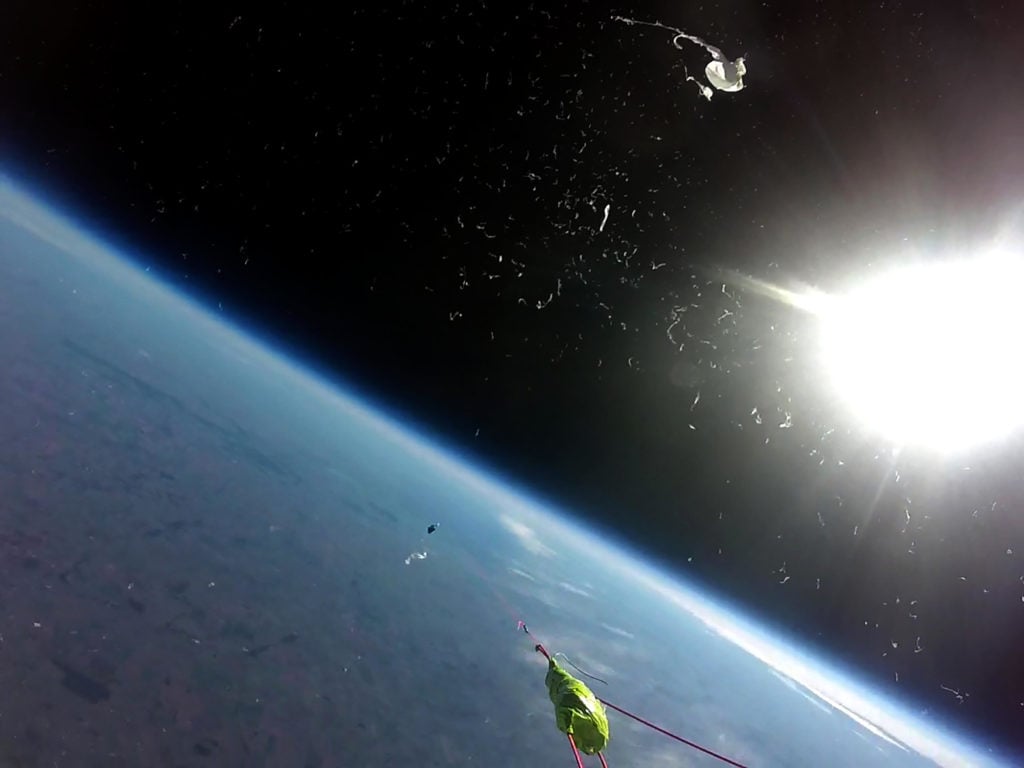
David Haines and Joyce Hinterding, Soundship (descender 1) (2016). Image courtesy of David Haines & Joyce Hinterding.
While many artists working in the cosmos are concerned with the visual experiences they are creating, David Haines and Joyce Hinterding’s Soundship (descender 1) was primarily an exercise in exploring the auditory qualities of the edges of space.
Descender 1—a special “soundship” spacecraft equipped with stretched ribbons and slow-scan TV transmitters (selected for the unique sounds they would produce in rapid motion)—was launched over 110,000 feet into the stratosphere with the goal of producing and recording sound “as the spacecraft meets the extreme elements on its journey, composing a unique sound composition based on the environmental situation at the time of flight,” according to the artists.
The final form of the piece is a two-channel video that highlights the course of the journey and—perhaps more importantly—plays the strangely industrial sounds produced by the oddly outfitted spacecraft.
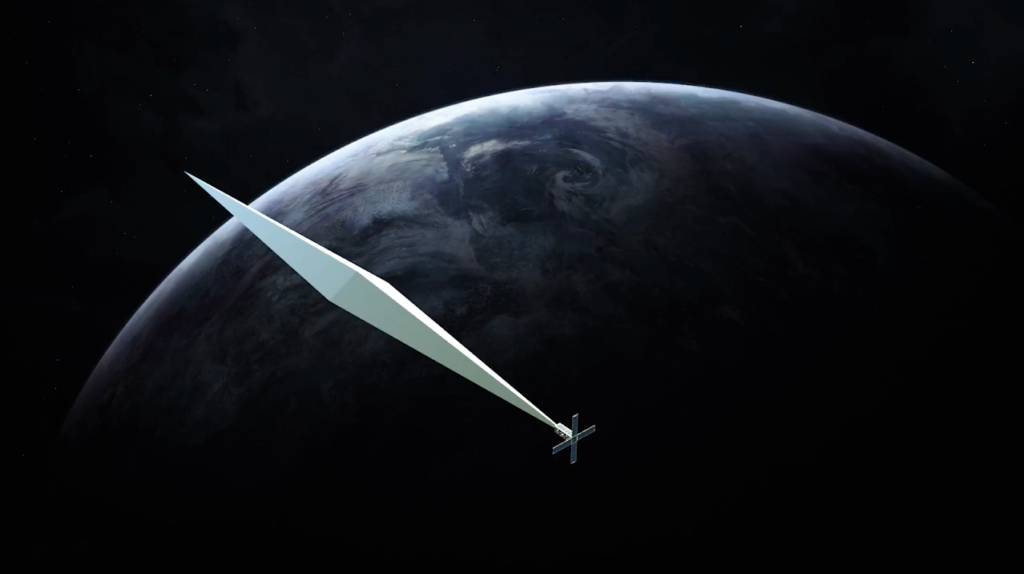
Trevor Paglen, Orbital Reflector, rendering. Courtesy of Trevor Paglen and Nevada Museum of Art.
Trevor Paglen’s Orbital Reflector, one of the most recent projects to make it to space, is also perhaps the most ambitious. Co-produced by the Nevada Museum of Art, the 100-foot-long, 5-foot-wide sculptural balloon (made of material similar to Mylar) is housed in a brick-shaped container. It was launched into space aboard a Space X rocket this past December as part of the largest-ever satellite launch into space in US history.
The nonfunctional satellite, which Paglen hopes will “help to change the way we see our place in the world,” is installed about 350 miles away from earth. Because Paglen needed FCC approval for the work, the proper installation of the $1.5 million project was delayed when the longest US government shutdown in history unfolded throughout December and January. The producers are also dependent on CSpOC, a branch of the United States Air Force, to “properly identify each satellite so that they can be tracked as they orbit the earth”, according to a statement released by the Nevada Museum last month. Given the large number of satellites that launched at the same time as Orbital Reflector, this task is still a work in progress.
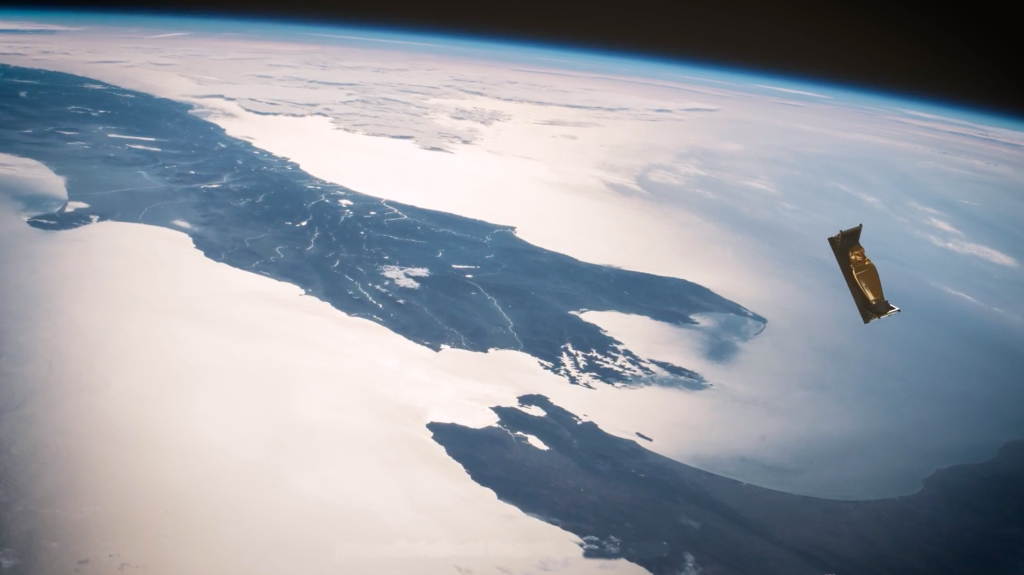
A still from an animation of Tavares Strachan’s Enoch (2018) in space. Courtesy of Spaceflight.
Enoch, a 24-karat gold sculpture by Bahamian artist Tavares Strachan, was launched into outer space on the same SpaceX rocket as Trevor Paglen’s Orbital Reflector in early December—but that’s where the similarities between the two end.
Created in collaboration with the Los Angeles County Museum of Art four years after Strachan received the inaugural LACMA Art + Technology Lab grant in 2014, Enoch is an ode to Robert Henry Lawrence Jr., the first black American to train as an astronaut with NASA. Lawrence Jr. tragically died in a training accident before he could embark on his first space voyage, but Strachan’s sculpture allows his destiny to be fulfilled post-mortem, with a bust of the astronaut embedded into the satellite.
Named after Enoch, the biblical figure said to have “never experienced mortal death”, the sculpture currently circles earth in a sun-synchronous orbit and is slated to do so for the next seven years.